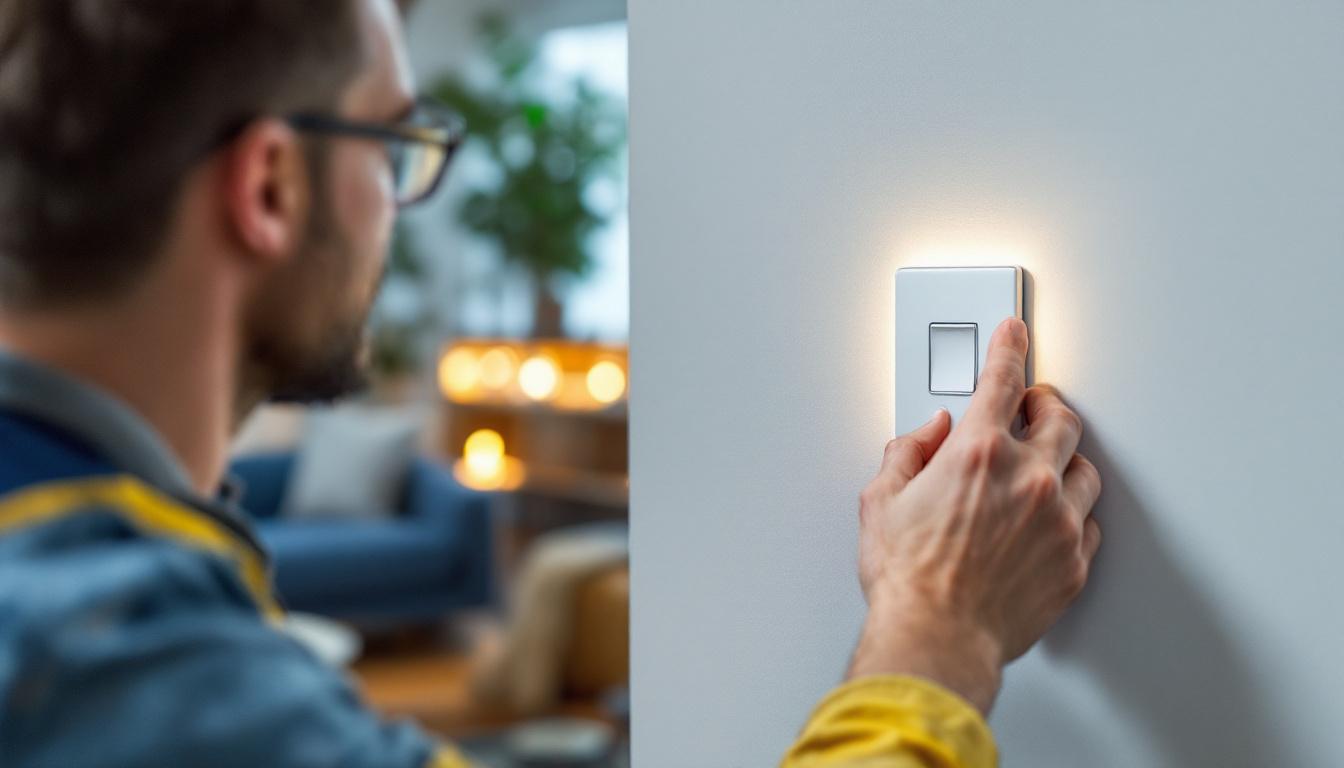
In the ever-evolving world of lighting design and installation, understanding and adhering to the United Lighting Standards is essential for lighting contractors. These standards not only ensure safety and efficiency but also enhance the overall quality of lighting projects. This article provides expert advice for lighting contractors, focusing on compliance, innovative practices, and future trends in the industry.
The United Lighting Standards serve as a comprehensive framework that governs the design, installation, and maintenance of lighting systems. They encompass a wide range of guidelines that contractors must follow to ensure that their projects meet both safety and performance criteria.
Compliance with these standards is not merely a regulatory requirement; it is a commitment to quality and safety. Adhering to the United Lighting Standards helps contractors avoid potential legal issues and enhances their reputation in the industry. Clients are more likely to trust contractors who prioritize compliance, leading to increased business opportunities.
Moreover, compliance with lighting standards can significantly reduce the likelihood of accidents caused by improper installation or faulty equipment. This not only protects the contractor’s interests but also safeguards the end-users of the lighting systems. For instance, poorly installed lighting can lead to glare, shadows, or inadequate visibility, which may result in accidents in both residential and commercial settings. By following the standards, contractors contribute to creating safer environments for everyone who interacts with their installations.
The United Lighting Standards cover various aspects, including energy efficiency, illumination levels, and fixture placement. Contractors should familiarize themselves with these components to ensure their work aligns with the latest regulations.
Energy efficiency is a critical focus area, with guidelines promoting the use of LED technology and other sustainable practices. Understanding the recommended illumination levels for different environments—such as residential, commercial, and industrial spaces—is also vital for delivering optimal lighting solutions. These recommendations are not arbitrary; they are based on extensive research and testing to determine the best practices for visibility and comfort in various settings. For example, in a retail environment, the right lighting can enhance product visibility and influence consumer behavior, while in an office space, proper illumination can improve employee productivity and reduce eye strain.
Additionally, the standards address fixture placement, which is crucial for achieving the desired lighting effect while minimizing energy consumption. Proper placement can help eliminate dark spots and ensure even distribution of light, which is essential in both aesthetic and functional applications. Contractors are encouraged to consider factors such as room dimensions, the purpose of the space, and the type of activities that will take place there when determining the best layout for lighting fixtures. This thoughtful approach not only adheres to the standards but also enhances the overall user experience in any given environment.
Implementing best practices in lighting installation can lead to improved project outcomes and client satisfaction. Here are some strategies that contractors can adopt to enhance their services.
Before starting any project, conducting a comprehensive assessment of the site is crucial. This includes evaluating existing lighting conditions, understanding the client’s needs, and identifying any potential challenges. A thorough assessment allows contractors to design a lighting solution that is tailored to the specific requirements of the space.
Additionally, engaging with clients during this phase can foster a collaborative environment. By discussing their preferences and expectations, contractors can ensure that the final design aligns with the client’s vision. This dialogue not only builds trust but also helps to clarify the project scope, budget, and timeline, which are essential for successful project execution.
Moreover, utilizing advanced tools such as photometric analysis software can enhance the assessment process. These tools allow contractors to simulate lighting scenarios and visualize how different fixtures will perform in the intended space. This data-driven approach can significantly improve decision-making and lead to more effective lighting solutions that meet both aesthetic and functional requirements.
The lighting industry is rapidly evolving, with new technologies emerging regularly. Contractors should stay informed about the latest advancements, such as smart lighting systems, which offer enhanced control and energy efficiency. Incorporating these technologies into projects can set contractors apart from their competitors and provide added value to clients.
Furthermore, attending industry conferences and workshops can provide valuable insights into emerging trends and best practices. Networking with other professionals can also lead to collaboration opportunities and knowledge sharing. Staying connected with manufacturers and suppliers can help contractors gain early access to innovative products and solutions, ensuring they can offer the best options to their clients.
Additionally, embracing sustainable practices is becoming increasingly important in the lighting industry. Contractors should familiarize themselves with energy-efficient lighting solutions, such as LED technology and solar-powered systems, which not only reduce energy consumption but also appeal to environmentally conscious clients. By integrating these sustainable options into their offerings, contractors can enhance their reputation as responsible service providers while also contributing to a greener future.
While the lighting industry offers numerous opportunities, it also presents several challenges that contractors must navigate. Understanding these challenges can help contractors develop effective strategies to overcome them.
Regulatory changes can pose significant challenges for lighting contractors. As standards evolve, contractors must adapt their practices to remain compliant. This may involve investing in new training or equipment, which can strain resources.
To mitigate these challenges, contractors should establish a proactive approach to regulatory changes. This includes regularly reviewing updates to the United Lighting Standards and participating in training programs that focus on compliance. By staying ahead of the curve, contractors can minimize disruptions to their operations. Furthermore, engaging with industry associations can provide valuable insights into upcoming regulations, allowing contractors to prepare in advance and avoid potential penalties or project delays.
The lighting industry is highly competitive, with numerous contractors vying for the same projects. This saturation can lead to price wars, which may compromise the quality of work and services offered. To stand out, contractors must differentiate themselves through exceptional service and innovative solutions.
Building a strong brand reputation is essential in a crowded market. Contractors should focus on delivering high-quality work, maintaining positive client relationships, and showcasing successful projects through case studies and testimonials. A robust online presence can also enhance visibility and attract potential clients. Additionally, leveraging social media platforms to share insights, tips, and industry trends can position contractors as thought leaders in the field. Networking at industry events and trade shows can also provide opportunities to forge partnerships and gain referrals, further solidifying their place in the market.
As the lighting industry continues to evolve, several trends are shaping the future of lighting design and installation. Contractors should be aware of these trends to remain competitive and meet client expectations.
Smart lighting systems are becoming increasingly popular due to their ability to enhance energy efficiency and user convenience. These systems can be controlled remotely, allowing users to adjust lighting levels and schedules through smartphones or other devices. Contractors should consider integrating smart technology into their projects to offer clients modern, flexible solutions.
Moreover, smart lighting can contribute to energy savings, which is a significant selling point for environmentally conscious clients. Understanding how to install and configure these systems will be a valuable skill for contractors moving forward. Additionally, the integration of sensors in smart lighting systems can automatically adjust brightness based on the time of day or occupancy, further optimizing energy use. This adaptability not only enhances user experience but also extends the lifespan of the lighting fixtures, reducing maintenance costs for clients.
There is a growing emphasis on sustainability in the lighting industry, driven by both regulatory requirements and consumer demand. Contractors should prioritize energy-efficient solutions, such as LED lighting and solar-powered fixtures, to align with this trend.
Incorporating sustainable practices not only helps reduce environmental impact but can also lead to cost savings for clients. Educating clients about the benefits of energy-efficient lighting can position contractors as knowledgeable experts in the field. Furthermore, the use of smart controls in conjunction with energy-efficient fixtures can create a comprehensive lighting strategy that maximizes efficiency. For instance, dimmable LED lights can be programmed to adjust based on natural light availability, ensuring that energy is used only when necessary. This holistic approach not only meets the growing demand for sustainability but also enhances the overall aesthetic and functionality of spaces, making them more appealing to potential buyers or tenants.
Adhering to the United Lighting Standards is essential for lighting contractors seeking to deliver high-quality, safe, and efficient lighting solutions. By understanding the importance of compliance, implementing best practices, navigating industry challenges, and staying informed about future trends, contractors can enhance their services and ensure long-term success.
As the lighting industry continues to evolve, embracing innovation and sustainability will be key to meeting the demands of clients and maintaining a competitive edge. By prioritizing these elements, lighting contractors can build a reputation for excellence and contribute positively to the industry as a whole.
Ready to elevate your lighting projects with the highest quality products at the best value? Look no further than LumenWholesale for spec-grade lighting solutions that meet and exceed United Lighting Standards. Our commitment to affordability, quality, and convenience ensures that you have access to an extensive selection of lighting products without the burden of inflated costs. With free shipping on bulk orders, LumenWholesale is your trusted partner for all your lighting needs, helping you stay ahead in the competitive lighting industry. Discover the difference and start saving today!

Discover how the choice of a 120V plug can significantly impact the profitability of lighting contractors.

Discover essential tips from lighting contractors on maximizing the efficiency of outdoor dawn-to-dusk lights.

Discover the top benefits of Wi-Fi light switches for lighting contractors, from enhanced energy efficiency to seamless integration with smart home systems.

Discover the essential role of ballast lights in the lighting industry and why they are crucial for contractors.